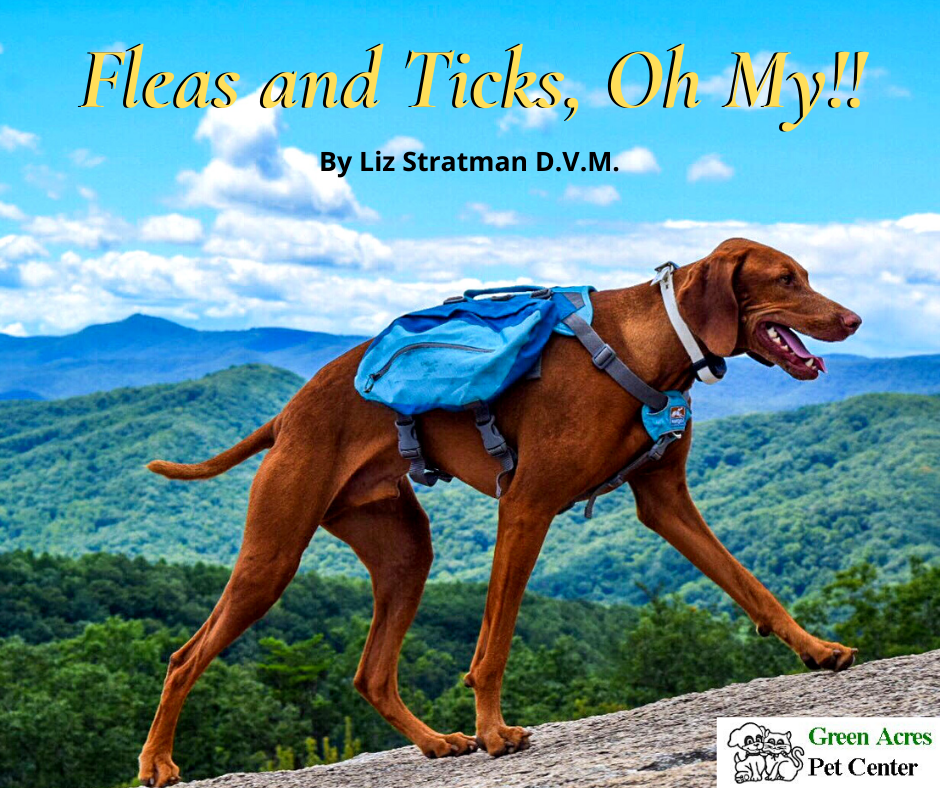
Fleas and Ticks, Oh My!!
Spring is here and it’s almost summertime. This means many people are spending more time outside enjoying mother nature with their pets, whether it’s on the back porch or hiking through the Sawtooth Mountains. As we spend more time outside, our exposure to parasites increases. Unfortunately, many parasites like fleas and ticks also increase the risk of disease.
This spring we have already seen several pets with fleas and ticks. During my four years practicing veterinary medicine in the beautiful Magic Valley, this is already by far the worst flea and tick season I have seen. This is likely due to our mild winter as many bugs were not killed off as normal.
In our area of Idaho specifically, we worry about our pets contracting tick borne diseases such as Ehrilichiosis and Rocky Mountain Spotted Fever. Ehrilichiosis is spread by the brown dog tick (Figure 1) which is found throughout the United States. Rocky Mountain Spotted Fever can also be spread by the brown dog tick, as well as the Rocky Mountain wood tick (Figure 2) that lives in our region. The western blacklegged tick (Figure 3) is not commonly found in Idaho but is present in Utah, where it can spread anaplasmosis and Lymes disease.
- Figure 1
- Figure 2
- Figure 3
Fleas (Figure 4) are found throughout the United States as well. Besides being pesky and irritating, fleas can cause pets to develop skin irritation and sometimes even induce an anemia from feeding on pet’s blood. Fleas also carry diseases like the plague and are a host for one of the most common tapeworms in dogs and cats- Dipylidium caninum (Figure 5).
- Figure 4
- Figure 5
To keep your pet protected against fleas and ticks, we recommend keeping both dogs and cats on year-round prevention. Even if your cat is indoor only, your other pets and family members go in and out of your home and may carry parasites indoors. Prevention is available in many forms, so please contact your veterinarian to determine which product is safest for your pet while also providing the best protection.
Liz Stratman DVM
*Figures 1-3 taken from https://www.cdc.gov/ticks/geographic_distribution.html
* Figure 4 taken from https://www.cdc.gov/dpdx/fleas/index.html
* Figure 5 taken from https://www.cdc.gov/parasites/dipylidium/index.html






